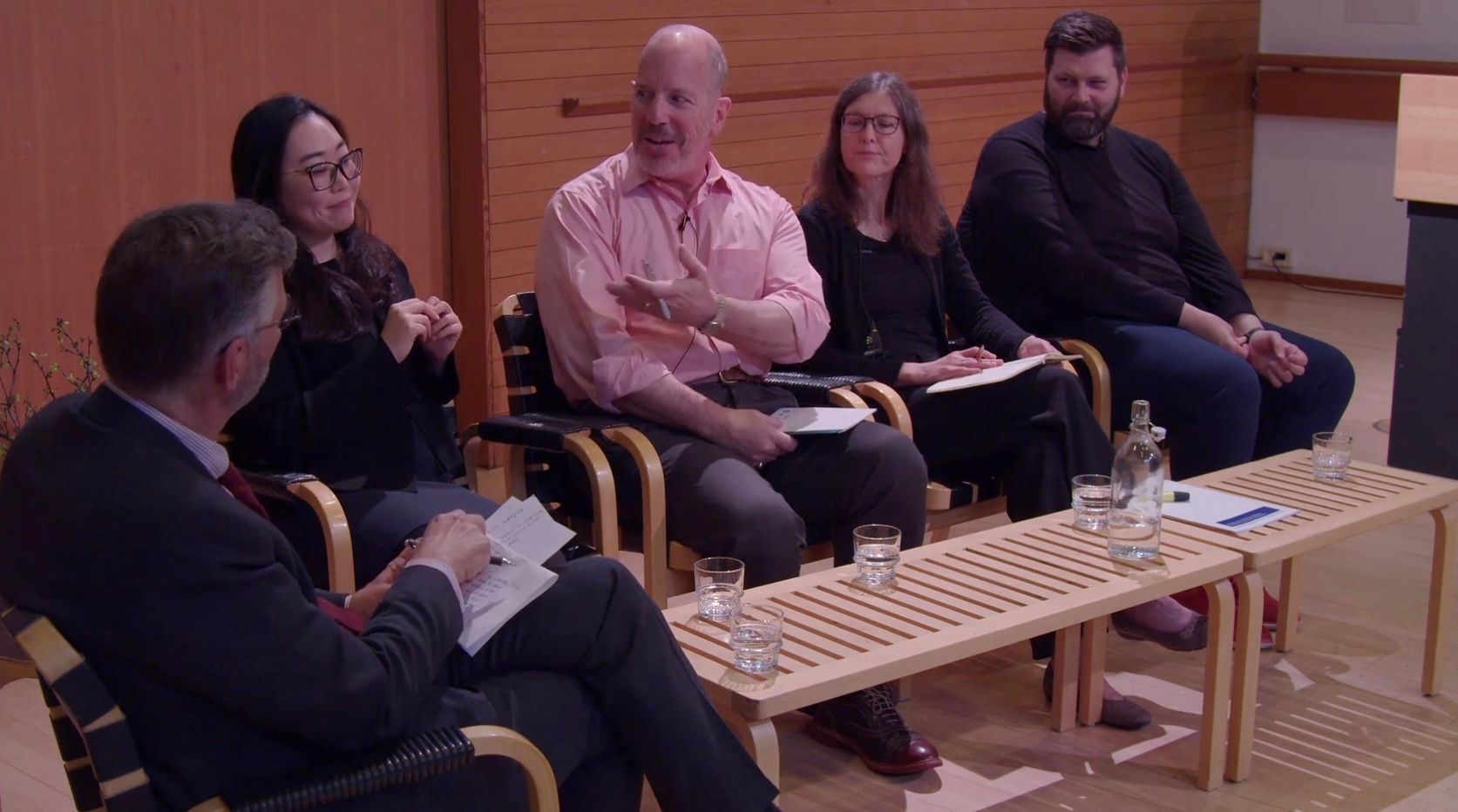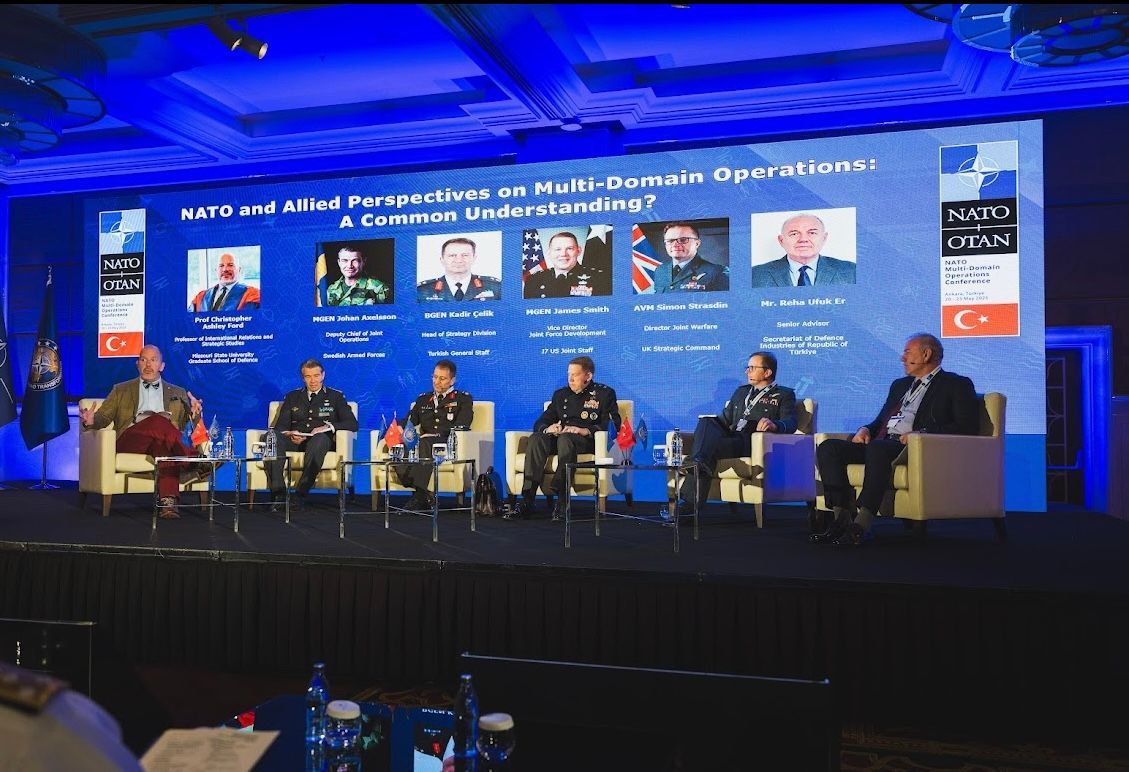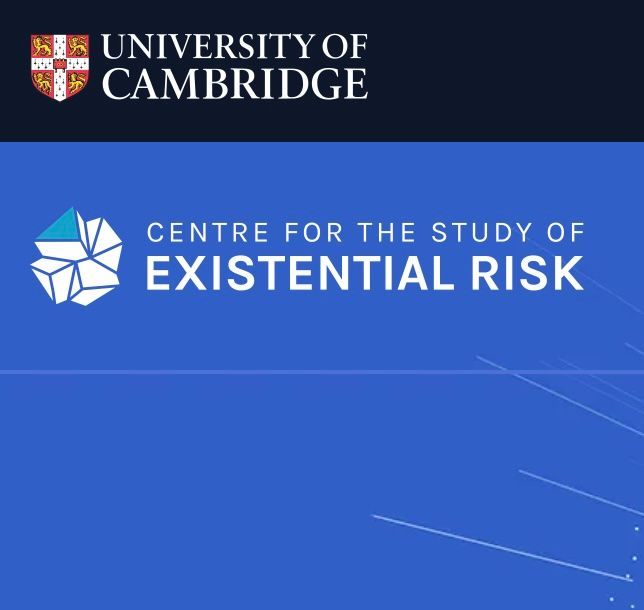NPT Wisdom for a New Disarmament Discourse
Remarks to the Ploughshares Fund Conference "Nuclear Weapons Policy in a Time of Crisis
Good afternoon, everyone. Let me start by conveying my apologies that General McMaster’s schedule did not permit his attendance today, as well as the fact that the Nuclear Posture Review (NPR) ordered by the President on January 27 is still ongoing and thus that there is not yet much to be said about U.S. nuclear weapons policy in this new Administration.
However, as the fellow who runs the Weapons of Mass Destruction (WMD) and Counterproliferation Directorate at the National Security Council (NSC) – and thus the NSC’s point man on arms control and disarmament issues – I am pleased to be able to speak with you about a important topic upon which we have only just recently begun to touch publicly: nuclear disarmament.
In particular, I’d like to talk today about the question of how we can – at this time of worsening strategic tensions, continued proliferation threats, and the commencement or continuation of nuclear arsenal modernization by every possessor state –think both realistically and constructively about nuclear disarmament.
These are issues of enduring importance to the public policy community, and in civil society, but different stakeholders tend to have very different interpretations of what this troubled time means for the disarmament enterprise. Some draw conclusions that follow the well-known words of the Prophet Isaiah to which The Ploughshares Fund’s name presumably alludes: “and they shall beat their swords into ploughshares, and their spears into pruning hooks” (Isaiah 2:4). (Similar phrasing appears in the Book of Micah [Micah 4:3].) These stakeholders conclude that the growing tensions of the present day mean it’s time to double down on trying to achieve disarmament exactly as the conventional wisdom of the disarmament community has prescribed for so many years now. This view treats nuclear weapons primarily as a cause, rather than a symptom, of insecurity.
Others see such a “doubling down” as being something akin to the definition of insanity popularly attributed to Albert Einstein, though also to various other people: insanity is doing the same thing over and over again and expecting a different outcome. The fiercest of these skeptics look not to Isaiah, but rather to Joel: “Beat your ploughshares into swords and your pruninghooks into spears” (Joel 3:10). For them, the disarmament dream is an illusion, and it’s time for the world just to admit this, and to follow St. Paul’s first letter to the Corinthians in growing up, “put[ting] away childish things” (1 Corinthians 13:11), and getting about the unpleasant and risky but unavoidable business of living in a permanently nuclearized world.
For my part, I’m not too fond of either of these extremes, and I wonder whether we may be able to recalibrate sources of inspiration in order to discern some “Middle Way” – or perhaps it’s an Aristotelean mean – in which it is still possible to speak realistically and constructively about nuclear disarmament, and thus to keep that dream alive. I suspect, however, that this will only be possible if we are able to be more honest about the dynamics that underlie armaments competition, and about where our collective disarmament discourse may have gotten somewhat off track in the past.
Both communities on the far flung ends of the disarmament spectrum are in the minority, I suspect, but they tend to dominate the debate in their pursuit of an elusive absolute moral victory. It is time for the silent majority of stakeholders occupying the space between these two camps to bring the discourse back to a practical middle ground, to preserve the gains we have made on both nonproliferation and disarmament, and the tools and agreements that have been part of that progress.
As I see it, U.S. policy on disarmament stands today at a crossroads, because some of the approaches designed in response to the security conditions that existed at the end of the Cold War and into the post-Cold War era – including, in particular, some of the disarmament-focused elements of the Obama Administration’s “Prague Agenda” – require readjustment.
For decades, the United States has taken the position that it seeks the eventual elimination of nuclear weapons, even to the point of committing as a matter of law, in the Nuclear Non-Proliferation Treaty (NPT), to pursuing this ultimate goal. While arms control mechanisms helped the superpowers manage and reduce some of the risks of their nuclear standoff during the Cold War and limit the upward spiral of the arms race, however, no actual agreement was possible on reductions in nuclear arms until the easing of tensions in the waning yearsof the Cold War begain to transform the relationship between the United States and its superpower rival. The INF and START treaties constituted the first major reductions in nuclear arsenals.
Those seminal agreeents were followed by the Presidential Nuclear Initiatives (PNIs) which dramatically reduced and constrained the category of non-strategic nuclear weapons. The optimism that prevailed at the end of the Cold War even led to the decision on the part of President George W. Bush, in the 2001 Nuclear Posture Review, to declare that the United States would no longer as a matter of policy insist upon numerical parity with Russia in strategic nuclear terms (though, ironically, this policy was subsequently reversed by President Obama in his own NPR). For some time, in fact, we were prepared unilaterally to go well below the numbers allowed by START. But – and this is crucial – it was changing conditions that made all these reductions possible, not the other way around.
The lesson of that period is that significant arms reductions are only likely to succeed when underlying strategic conditions change in ways that permit them. In light of this, you might think it would be obvious to everyone that the best way – and indeed, perhaps the only way – to increase the odds of achieving a peaceful and stable disarmed world would be to create ever more felicitous strategic conditions by focusing upon the very “easing of international tension and … strengthening of trust between States” that the Preamble of the NPT explicitly envisions “in order to facilitate” disarmament.
This point was certainly obvious to U.S. and other Western leaders as far back as November 1945 – long before the NPT – when the U.S., British, and Candian heads of government jointly declared that the only genuine answer to the problem of disarmament lay in “creating conditions of mutual trust.” Of course, I don’t mean to suggest that there was not some debate on this score. From the start of the nuclear age, as our representative to the U.N. Security Council observed in October 1949, disarmament opinions have been divided between those who emphasize “the necessity of developing conditions of world confidence before disarmament and, conversely, [those who emphasize] disarming in order to engender conditions of world confidence.” The United States, however, traditionally came down in the former camp, taking a “conditions”-based approach to disarmament throughout the Cold War.
By contrast, much of the conventional wisdom of the broader disarmament community has often sought to address these challenges from the opposite direction, focusing principally – and sometimes exclusively – upon the nuclear weapons themselves rather than the underlying conditions of conflict, competition, and security that continue to require nuclear deterrence (or extended deterrence) or which for other reasons may lead countries to wish to possess those weapons.
The broader disarmament community’s emphasis upon weapons, rather than upon conditions, has not changed for a long time. In the post-Cold War era, however, though most U.S. policymakers have been much more sensibly mindful of strategic conditions than have disarmament activists, U.S. officials felt it important to demonstrate that they were leading the way toward nuclear disarmament – in particular, by steadily reducing the number of U.S. (and Russian) weapons, which indeed looked possible for some time while security conditions appeared to be improving.
President Bill Clinton’s 1994 Nuclear Posture Review, for instance, tried to “hedge” against uncertainty, but it also emphasized the importance of “leading” the international community on disarmament. The objective of demonstrating fidelity to the ideal of disarmament by moving to reduce numbers was given particular prominence under President Obama, whose so-called “Prague Agenda” promised gradual “concrete steps” leading toward the eventual elimination of all such weapons, even if this might not occur, as President Obama put it, in his lifetime. U.S. policymakers also argued – as made clear in the 2010 NPR, for instance, as well as in President Obama’s 2013 State of the Union address – that showing disarmament progress by making gradual numerical reductions along a presumed road toward elimination would elicit nonproliferation cooperation from others, while also not actually harming U.S. security or the “extended deterrence” that we provide to allies.
But much of this approach hasn’t worked, and probably couldn’t have done so because it focused too much upon the weapons rather than upon the actual conditions under which so many countries clearly still feel the need to have such weapons. Today, the post-Cold War U.S. approach to disarmament seems to have run out of steam.
Over time, tension developed within that agenda, as the large numbers of weapons made unnecessary by the end of the Cold War were gradually dismantled – constricting our ability to demonstrate disarmament bona fides by showing continuing numerical reductions – and as the global threat environment evolved from the fairly benign strategic situation of the 1990s to one that is, in the present day, considerably more problematic and complicated. As a result, it became much harder to continue to move forward on disarmament, at least by numerical metrics, without harm to U.S. national security interests and alliance obligations. The two main elements of the traditional post-Cold War U.S. approach, in other words – seeking to demonstrate disarmament progress while avoiding steps that would undermine security – have begun to interfere with each other. As I have repeatedly noted in public remarks, the reduction-centric approach has thus been running out of headspace.
Indeed, to some extent, the very enthusiasms associated with the “Prague Agenda” may have helped make these problems worse. And I don’t just mean that the heavy political emphasis upon the imperative of eventual, total nuclear disarmament created some frictions within U.S. alliance relationships, inflamed disarmament-related political fights within allied political systems, and encouraged unrealistic expectations that fueled the “ban” treaty, which in turn has the potential to damage the global nonproliferation regime. All that is true, but there have also been externalities for strategic stability.
From the perspective of Russian and Chinese planners, U.S. nuclear policy is particularly alarming not just despite being part of a numbers-driven disarmament agenda but in large part precisely because of it. From their perspective, the U.S. disarmament agenda seems less like a salutary moral imperative and more like a trick with which to put them at the mercy of U.S. conventional military power. They seem to fear, for instance, the possibility of a preemptive war in which the United States would employ a combination of strategic nuclear and non-nuclear strikes against Russian or Chinese nuclear forces, destroying enough of these forces that U.S. missile defenses would be able to protect the United States from nuclear retaliation by what remained.
As seen from Moscow and Beijing, it’s largely a question of ratios: the lower their own nuclear numbers, the more alarming the threat would be from any given level of U.S. missile defense and conventional arms. From our American perspective, such Russian and Chinese ideas are just paranoid fantasies: fevered speculations about the possibility of us doing what we have no need to do, no intention of doing, and no feasible plan to accomplish. Nevertheless, officials in Moscow and Beijing give every sign of taking such fears seriously. More importantly, at least in part as a result of such concerns, Russia and China may have been adopting behaviors, developing capabilities, or adjusting their own nuclear postures in ways that could have destabilizing consequences.
I have argued repeatedly that if Russia and China are indeed really worried about these dynamics, then we and they have a shared interest in reining in the North Korean and Iranian missile threats – for these, after all, are the primary rationale for the augmented U.S. missile defenses that Moscow and Beijing so dislike. More constructive efforts from them to help us control those threats would go a long way toward alleviating some of the pressures that Russian and Chinese officials say they face as a result of U.S. responses to such third-party threats. To the degree that Russia and China do not join us in reining in threats from North Korea and Iran, they may continue to face to what they interpret as increased strategic threats from the United States as a result of our missile defense, and this may encourage behaviors in response to those perceived threats that we ourselves do not like. So, in a presumably unanticipated side-effect of the disarmament components of the “Prague Agenda,” the political drive to demonstrate movement toward ever-lower numbers of nuclear weapons may have exacerbated this situation, because it threatens to make their offense-to-defense “ratio problem” more acute.
The effort over many years to show relentless forward numerical movement on disarmament – with its concomitant political pressures to eschew anything “new” or “different” in terms of weapons or doctrine, however important such innovations might actually be for U.S. national security – may also have harmed long-term U.S. nuclear planning, particularly with regard to achieving and maintaining a responsive infrastructure capable of ensuring our ability to meet future U.S. national security needs in an unpredictable environment, and with regard to ensuring appropriate U.S. military prioritization and focus on nuclear missions. A task force report in 2008, for instance, found that policies adopted in “[t]he post-Cold War environment” had “devalued” nuclear missions, causing “a serious erosion of focus, expertise, mission readiness, resources, and discipline in the nuclear weapons enterprise within the Air Force.” And in 2010, ten former directors of U.S. national security laboratories wrote to the Obama Administration to warn that certain policy restrictions were at risk of stifling those laboratories’ ability to react effectively to future security needs.
Thankfully, our current program of record for nuclear weapons modernization retains the significant bipartisan support it acquired in part through a sort of grand bargain between Congress and the Obama Administration over ratifying New START. Nevertheless, there clearly have been some challenges over the years as we have struggled with how to retain the focus we still need upon nuclear deterrence, while simultaneously trying to convince onlookers that we are making the relentless numerical progress they expect to see toward eventual elimination.
The “Prague” expectation that movement toward nuclear weapons elimination would elicit support for the U.S. nonproliferation agenda has also not lived up to its promise. To begin with, in contrast to our conventional military might – which they do seem to fear – the proliferators and would-be proliferators of the world give scant sign of caring much about our own nuclear arsenal one way or the other. Nor do belated U.S. moves to maintain and modernize our U.S. nuclear deterrent appear to have caused any third-party nation to slow down cooperating with us in bolstering the nonproliferation regime.
The idea that doing more on disarmament is some kind of key with which to unlock nonproliferation success is thus a theory still unsupported by evidence. In fact, far from U.S. disarmament posture having catalyzed an era of phenomenal nonproliferation successes, within the decade and a half after the 1994 NPR – a time of sweeping reductions in U.S. and Russian nuclear arsenals, to the point that the U.S. stockpile has now come down by 87 percent from its peak in the 1960s – saw three additional countries test and acquire nuclear weapons, and two more be discovered in secret nuclear weapons programs facilitated by a worldwide proliferation network. Correlation is not necessarily causation, of course, but it’s not clear that we got much by way of nonproliferation success in return for our 87 percent.
While the causal linkage that disarmament steps build support for nonproliferation are at best unproven, the reverse linkage is undeniable. Preventing nuclear proliferation is one of the necessary conditions – albeit not a sufficient one – for nuclear disarmament. Without a strong nonproliferation regime that not only prohibits proliferation but rewards compliance and detects, remedies, and deters violations, prospects for creating conditions conducive to further nuclear arms reductions would be bleak indeed.
Some of the most important nonproliferation progress made during my lifetime, moreover, may in fact owe more to our use of nuclear deterrence than to our disarmament. I would agree, for instance, with U.K. Foreign Secretary Boris Johnson’s recent remarks at Chatham House that it was the U.S. provision of security guarantees to allies during the Cold War that “made possible the global consensus embodied by the … Nuclear Non-Proliferation Treaty.”
So, all in all, the evidence is piling up that it’s time to recalibrate. The traditional post-Cold War approach of seeking to demonstrate disarmament bona fides by showing steady numerical movement toward elimination, while trying to avoid steps that could actually undermine U.S. national security, has largely run its course and is no longer tenable, especially given evolving security conditions.
So it’s time to explore alternative approaches – and we are.
But it may be that the answer isn’t something entirely new, but rather a wisdom that has been hiding in plain sight all along – and in a form with which most of the countries of the world have professed agreement for nearly as long as I have been alive. As I noted earlier, the NPT Preamble points out the need for the “easing of international tension and the strengthening of trust between States … in order to facilitate” disarmament. This – and the causal ordering it signals about how to advance disarmament – is the conceptual key to understanding what “effective measures relating to nuclear disarmament” we should pursue in accordance with Article VI.
That is, though it is certainly true that the reductions we made in the wake of the Cold War were “effective” ones in reducing nuclear dangers, as we all look now to the future, measures that focus upon resolving the international conflicts and rivalries that produce the perceived need for nuclear weapons are much more likely to be “effective” than focusing solely upon reducing the number of weapons themselves. If there exists a viable road to disarmament in the current security environment, in other words, it surely must run through the amelioration of such adverse geopolitical conditions. If we can successfully address those conflicts and rivalries, reducing or even eliminating the weapons themselves may be possible; if we cannot, it’s hard to see how any weapons-focused agenda could succeed.
Don’t get me wrong: there is, of course, no guarantee that this will work. The conditions that might make the elimination of all nuclear weapons possible are clearly not present today, and it is hard not to agree with the Strategic Posture Review Commission’s bipartisan and unanimous conclusion in 2009 that establishing such conditions would likely require a fundamental transformation of the international political order – a transformation that certainly doesn’t seem to be anywhere on the horizon at this time.
Nevertheless, I’m convinced that it is still possible to have a vision of the nuclear future that is fully compatible with our obligations under Article VI of the NPT and with longstanding hopes for eventual nuclear disarmament – and a vision that is, in reality, more conducive to making real and lasting progress on disarmament than the United States’ traditional post-Cold War approach.
To this end, we must acknowledge several things: (a) how far we are today from the conditions that would actually make elimination possible, and how addressing those underlying conditions is really the rub of the challenge, without which no approach that focuses solely on arms could succeed; (b) how little we really know about the future and the threats we might face therein; (c) the degree to which a full flowering of the world envisioned by Article VI of the NPT must necessarily await a strategic environment quite different from our world today; and (d) the danger that unrealistic expectations about nuclear disarmament, combined with overstated linkages between disarmament and nonproliferation, could put international commitments to nonproliferation at risk. There will be many who won’t like hearing these truths.
But such a vision would not give up on the possibility and the long-term goal of disarmament, either – nor on the hope of negotiating incremental downward steps over time when, and to the degree that, real-world conditions permit. Indeed, if it could escape the conceptual ruts of the current conventional wisdom and devote itself instead more effectively to addressing the conditions of conflict and insecurity that are the real problem inhibiting such progress, such an approach has the potential to end up being a better way to work toward a disarmament-facilitating “easing of international tension and … strengthening of trust between States” (in the words of the NPT Preamble) than any other path available today. After all, Article VI obliges us to pursue effective measures, not ineffective ones. Why not explore new possibilities when what has been tried isn’t working?
If other stakeholders agree that such a vision makes as much sense – and that it is as honest and realistic, and sounds as promising – as I think it does, we will all have much to talk about and work together to achieve in developing and implementing a new agenda of genuinely “effective measures” designed to help ease tensions and strengthen trust in the sorts of ways the drafters of the NPT seem to have envisioned all along.
I look forward to our discussion.
-- Christopher Ford








